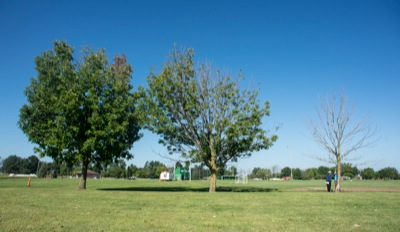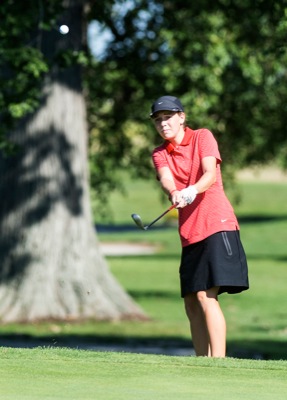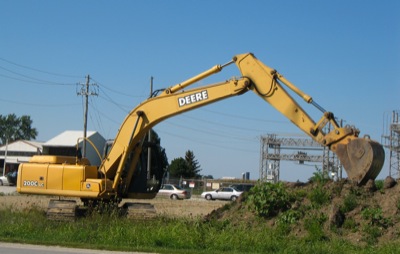Tuesday, September 9th, 2014
Ash borer continues to take toll
By William Kincaid

Photo by Mark Pummell/The Daily Standard
A trio of trees stricken by the emerald ash borer at Celina's Westview Park demonstrates the progression of the infestation. According to city safety service director Tom Hitchcock, damage from the Asian beetle starts at the canopy and spirals downward until the tree is dead.
The emerald ash borer first identified in Ohio in 2003 is wreaking havoc locally, forcing officials to remove hundreds of dead and potentially dangerous trees from parks and public rights of way.
Most communities are removing the damaged trees and replacing them with other types of trees. Cost estimates were not available.
Infestations of the destructive insects continue to bedevil homeowners and city officials in Celina. City safety service director Tom Hitchcock said most ash trees in town are affected and will likely perish.
"If it's an ash tree, it's going to die," Hitchcock recently told the newspaper while watching city employees remove 25 dead or dying ash trees at Westview Park.
Indications of the borer include a thinning of the tree's canopy, branch dieback and the insect's small D-shaped exit holes in the tree's bark. Adult borers are metallic green and about the size of a grain of cooked rice.
Celina Mayor Jeff Hazel estimates 200 ash trees in Eastview Park are afflicted. Most of the trees, which create a public hazard with falling branches, will be taken down by either city employees or an outside contractor, Hazel said.
The city replaces the removed ash trees with a variety of other kinds, Hitchcock said, pointing out more trees will be planted at Westview Park after progress is made on the new softball diamonds.
The village of Coldwater also has been hit hard by the insect.
"We've taken down probably over 250 trees throughout town, along the road rights of way and in our parks," village administrator Eric Thomas said.
Thomas said as many as 600 trees on public grounds are infested and won't survive the borer. For the last decade, the village annually has planted about two dozen species of trees.
The village this year paid Fitzwater Tree Service $11,000 to remove about 100 trees in Coldwater Memorial Park, and may also pay $5,000 to $6,000 to the company to replace some of them, Thomas said.
In St. Marys, a city tree-trimming crew and an outside contractor are working to clear 375 ash trees in parks, public rights of way and boulevards infested by the borer, Gregory Foxhoven, director of public service and safety, told the newspaper.
"We have identified at least 375 trees that have been affected to the degree where they have to be removed," he said.
However, 192 of 195 ash trees treated last year with injections of an insecticide have survived and some have recovered well, according to city officials.
"Obviously we will continue to monitor them," Foxhoven said.
Fort Recovery Village Administrator Randy Diller said the town has not been as severely impacted as other communities. About a dozen ash trees have been taken down in Fort Site Park.
The city will remove sickened or dying ash trees from the public right of way near homes and replace them with a different type of tree, Diller said.
Officials with the Ohio Department of Natural Resources said only nine counties in the state are not infested with the borer.



